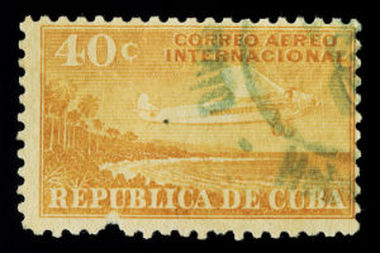The chances are good that you are a collector of something. So what makes something a collectible or when do you need to “Schedule” your personal belongings. The simple answer is: it depends.
Some of the most commonly collected items include fine art, sports memorabilia, wine, rare books, stamps and coins, antique rugs and tapestries, musical instruments, action figures, dolls, toys, auto and movie memorabilia, and guns.
Large private collections generally have proper risk management in place including fine-art insurance that covers the full value of the items. But many smaller collections (those valued below $1 million) tend to be insured under a traditional homeowners policy or have no insurance at all. If these collectors face a devastating event resulting in damage, they may discover too late that their coverage is not sufficient to address their financial losses.
In simple terms, the process of insuring collections of fine art and collectibles under a traditional homeowners policy tends to be time-consuming and difficult while possibly yielding lower limits and less expansive coverage when compared to obtaining coverage with a fine art and collectible insurance policy. The comparisons below address specific differences between the two types of policies.
Appraisals – Homeowners policies generally require appraisals for collections or individual items valued over $2000 as part of the underwriting process. Many collectibles insurance policies do not require appraisals at the time of application.
Deductibles – Zero-dollar deductibles are the standard for collectibles insurance policies with some offering additional deductible options. Homeowners policies may offer zero-deductible policies, but it is not as common.
Limits – The limit on fine art and collectibles coverage generally ranges from $500 to $2000 for a homeowners policy without the addition of a floater or rider. Even with an added floater or rider, homeowners policies tend to limit the level of exposure. A collectibles policy may offer coverage up to $1 million or more.
Coverage – One of the most important coverage differences between a homeowners policy and collectibles policy is the valuation of covered items. Homeowners policies tend to insure for actual cash value while collectibles policies insure the full collectible value of items in the collection. This distinction alone can reflect a startling difference in potential claims payments in the event of a loss. Homeowners policies generally cover named perils only, exclude coverage for items during transit, limit coverage on items stored away from the home to as little as 10 to 15 percent, and extend coverage to newly acquired items for only 30 days. By contrast, collectibles policies typically include all risk coverage and provide coverage for items in transit, items stored away from the home (such as in an office or storage facility), and newly acquired items for up to 90 days. Some collectibles policies may offer additional coverage benefits such as discounts for monitored fire and burglar alarms or items kept in a UL-rated safe.
Claims – In today’s insurance market, filing a claim against a homeowners policy may leave an insured vulnerable to premium increases at renewal or the possibility of non-renewal. With a separate collectibles policy, claims do not affect homeowner premiums or loss history. In addition, companies that offer collectibles insurance may have claims adjusters with a high level of expertise in this area. Adjusters with this specialized knowledge are better able to determine the value of unique or rare items, which should expedite the claims process and lead to a better outcome for the insured.
A detailed comparison of the benefits and limitations of standard homeowners insurance versus collectibles insurance demonstrates that specialty coverage can be very advantageous for even a small collector.
Standard homeowners policies have limitations for most common items such as Firearms, Jewelry, Furs, Silverware, Precious and Semi-precious stones, Money, Gold, Silver, Coin or Stamp collections etc. Anything that has a special value such as an oriental rug (worth more than an area rug you may purchase as a home improvement store), anything that is “one of a kind” that can’t be replaced by going to a local department store, a collection of things such a porcelain figurines, fine art, breakable art such as a vase or statue. These are things that may need to be insured by a personal articles policy. Sometimes referred to as “scheduling”, this is a policy that insures specific items at a specific value determined by an appraisal or other means of valuation.
If your $10,000 Persian rug is damaged but not insured for $10,000, it is a rug and can be replaced for about $150 at Home Depot. A 1938- 3 legged Buffalo nickel may appraise for several thousand dollars depending on the grade, but if it is not insured for that value, you guessed it, it’s just a nickel worth 5 cents. Sentimental value is dear to us and nothing can replace sentimental value but Grandma’s old wedding ring could be worth a few hundred dollars or a million bucks. Every insurance policy has limitations, exclusions and provisions that you may need to comply with before you are properly insured. Please contact Lee County Insurance Agency for additional information about insuring your valuables.
“Our blogs are for general education and information only and may not represent your unique needs. Coverages will vary. Please contact your insurance agent to verify your specific policy terms and conditions.”


